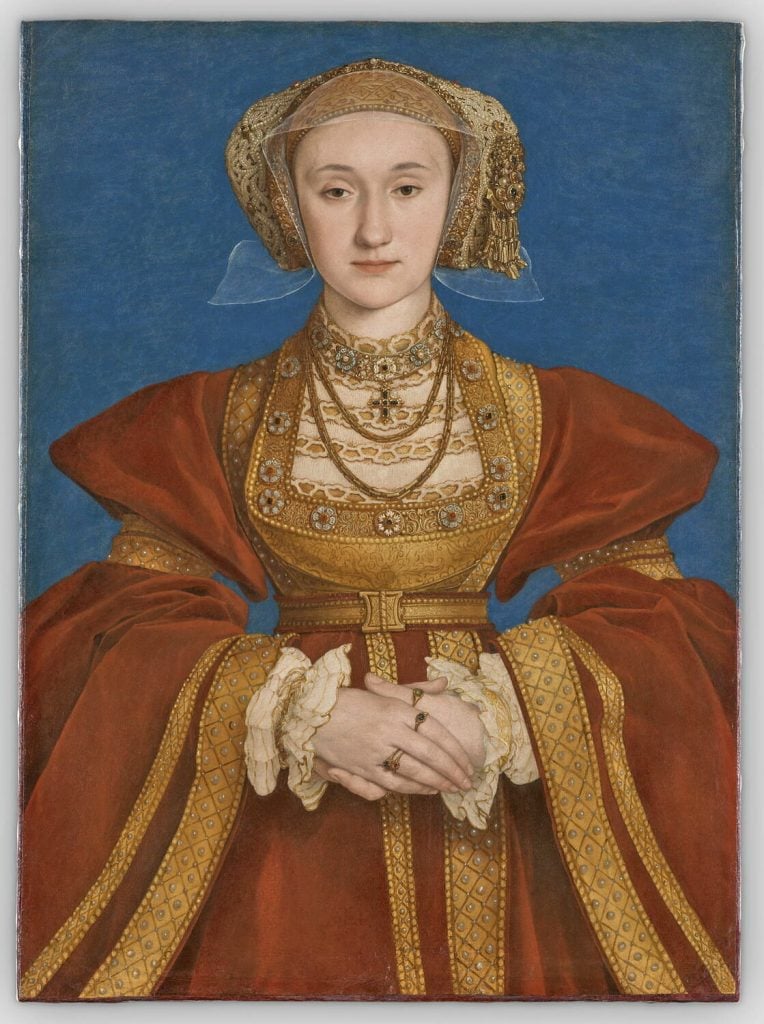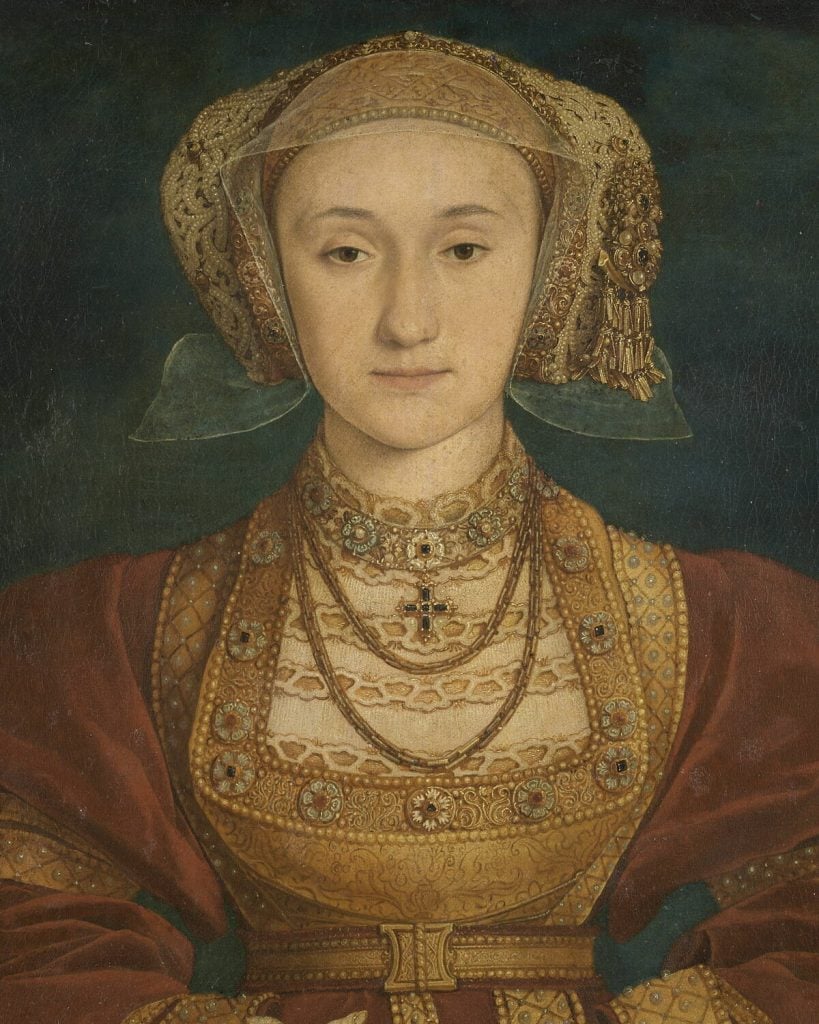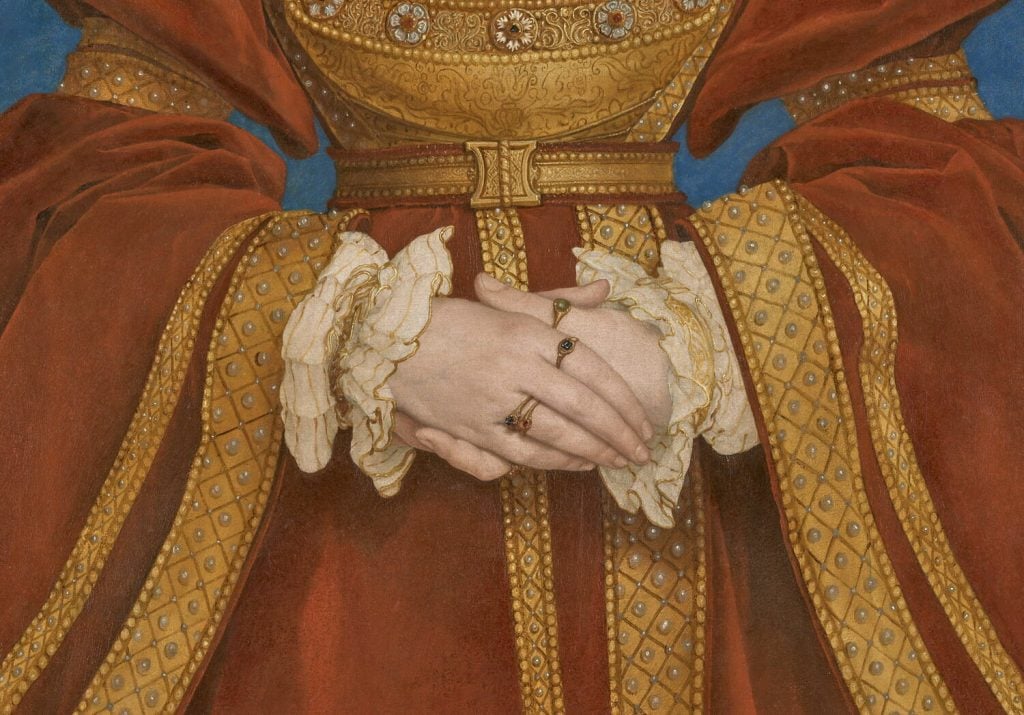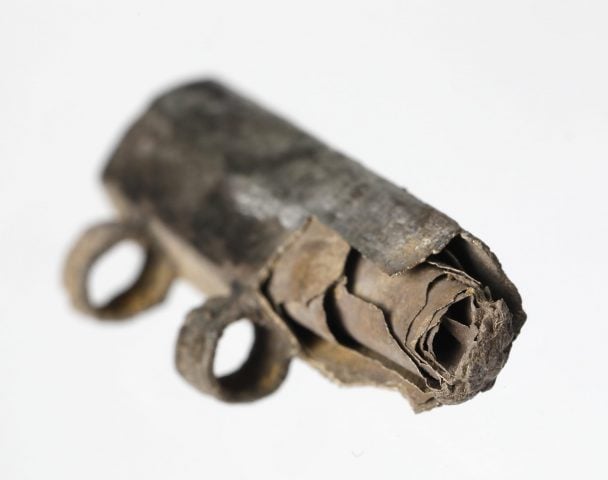Art World
The Louvre Gives Its Anne of Cleves Portrait a Massive Glow-Up
The Hans Holbein portrait is looking as it would have done when first presented to King Henry VIII in 1539.

Paris’s Louvre Museum has returned Hans Holbein’s portrait of Anne of Cleves to the Richelieu Wing after the 1539 painting was removed for conservation and cleaning. The portrait has been in the collection of the Louvre since the museum’s 1793 opening.
The differences achieved by the restoration team are impressive, particularly in the removal of built-up layers of dirt which revealed the original bright blue background behind Anne of Cleves, which for many years has appeared to be a murky sea green.

Hans Holbein, Anne of Cleves (ca. 1539). Photo: © 2017 RMN-Grand Palais (musée du Louvre) / Tony Querrec.
A before-and-after comparison was analyzed by the British historian, broadcaster, and author Owen Emmerson in a video posted on his X account on March 13. Emmerson called the results “absolutely breathtaking,” highlighting that we can now fully appreciate Anne’s rich red gown and its shining pearl detailing. In another post, Emmerson pointed out that when his late 18th-century copy of the painting was cleaned, “a sludgy green background was revealed, suggesting [that the true bright blue background] may have been concealed for centuries.”
The cleaning process has also brought dazzle back into the jewels worn by the future Queen of England, including a bejeweled gold cross necklace and several gold rings. These jewels have been documented in close-up photos in the museum’s March 12 Instagram post announcing the return of the painting to room 811. Room 811 contains works by Dutch artists made in the first half of the 16th century.

Detail of Hans Holbein, Anne of Cleves (ca. 1539). Photo: © 2017 RMN-Grand Palais (musée du Louvre) / Tony Querrec.
It was this portrait by Hans Holbein the Younger that famously sealed the deal on the marriage between the then 24-year-old Anne and 48-year-old King Henry VIII. Anne, born Anne von der Mark, was the second eldest daughter of Duke Johann III of Cleves—a Catholic state on the Rhine—and had been promised in marriage to the son of the Duke of Lorraine since she was 12. After the death of Henry VIII’s third wife, Jane Seymour, in 1537, the king sought out new brides in European courts. The King commissioned court painter Holbein the Younger to create portraits of Anne and her younger sister Amalia, who had been suggested by the King’s chief minister Thomas Cromwell.
When Anne arrived in England, Henry was displeased with the reality of his new bride’s looks in comparison to the vision promised in Holbein’s portrait. Cromwell had assured the king of Anne’s beauty, saying that “every man praiseth the beauty of the same lady as well for the face as for the whole body,” but Henry was deeply disappointed. Despite apparently exclaiming, “I like her not! I like her not!” at their first meeting, the pair married on January 6, 1540. Six months and six days later, the pair’s marriage was annulled on grounds of non-consummation.
Anne of Cleve’s marriage was the shortest-lived of Henry’s six marriages. She lived out the rest of her life in an a respected position in court, known as the “King’s Beloved Sister” and outlived each of Henry’s next two wives. She was even invited to Hampton Court Palace for Christmas in 1541 in attendance of Henry’s new wife Catherine Howard, whom he had married 16 days after his marriage with Anne was annulled.
An updated photo of the painting has been added to the artwork’s listing on the Louvre collection website, but no further information on the restoration has been released by the museum.





